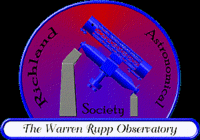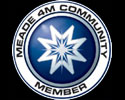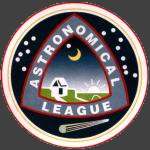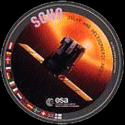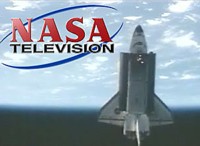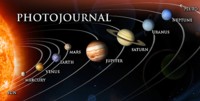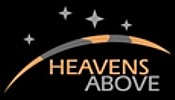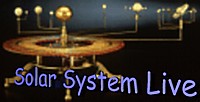Fall/Winter 2009

Previous Editions of the M111:
M111 Fall 07
M111 Late Fall 07
M111 Dec 2007
M111 Jan 2008
M111 April 2008
June/July 2008
August 2008
September 2008
October 2008
December 2008
February 2009
M111 Spring 2009
M111 Summer 2009
M111 Fall 2009
Greetings...
Welcome all ye weary travelers to a new type of M111... "On Line"! Thanks to the magic of the internet, it's now easier than ever to keep up a quarterly newsletter. The only thing that isn't easy is getting new content! Any time you have something you'd like to offer - be it a story of how you first got started in astronomy, a star party you just attended, a telescope you just bought, or your favorite constellation, just drop me a line with the story included and I'll be sure to get it posted!
In the meantime, I do my best to make sure everyone is aware of our newsletter. If for some reason you need a hardcopy and cannot print one yourself, please feel free to contact me at 419-845-2629 and I will be happy to send you one via regular postal mail. As always, if you have something to contribute? Let me know!
Back to top...
Words From Da' Prez
 Greetings, Fellow RAS Members!
Greetings, Fellow RAS Members!
WOW! What an incredible year 2009 was! Think of all the things we did! We had "Code Blue", the project to re-coat the 31" mirror... We had the International Year of Astronomy, we had "Earth Hour", we had "100 Hours of Astronomy", we had Lowe-Volk Park stargazes, we gave a huge program for the Friendly House Fund Raiser, we had "Starry Nights", we had Hidden Hollow, we had our annual "Haunted Star Party", we had the largest public attendance of recent years all summer long and.... we had fun!!
Recent months have seen great changes in our Club and the way we do things at the Observatory. We've become a happy group... One where our membership participates and enjoys themselves. Club members like Steve and Arlene, Terry and Dan arrange programs and carry them out. Our newer members quickly learn to use the big scope and those just learning astronomy learn quickly! Our Club equipment is being used and things have happened, like our southern skies observing project and continuing Astronomical League Observing Awards! Everything we have done has turned into an absolutely success and you know who is to thank for it? That's right... YOU! We're happy and alive again and our future for 2010 looks so bright we might just have to wear shades!
I can't tell you how good it is to see our membership practicing astrophotography, making use of our resources and being proactive. We're continously getting new members and it's just incredible to watch them flourish. We're just full of wonderful ideas and the kind of people that make dreams come true! Until next time?
Keep rockin' the night away! ~Tammy
Back to top...
New Website Feature - NSN "Request A Program

Are you ready for another great resource? Then hang on to your hats as the NASA Night Sky Network gives us an even bigger hand with public outreach!
If you're a member of the public at large and interested in having the Observatory provide you with an educational program, you can now easily request one by visiting the NASA NightSky Network site and simply enter it in. If you are a member of the Observatory and would like to give a program, have the Club notified for help and post your results on the website, all you have to do is log in and add the program. The features are easy to use and it will automatically notify other Club members of the program date and even ask for help if you need it! But that's not all it features! You'll find maps of our location as well as upcoming Club events. Be sure to use this handy new tool! (And if you are uncomfortable about adding your information, please feel free to give me a call and I'll help!
Back to top...
NASA SpacePlace For Educators
 NASA has just published the latest issue of the Space Place Newsletter: News and Notes for Formal and Informal Educators. The newsletter is all about the many useful and--it goes without saying--free resources on the Space Place website that can be helpful for kids and adults interested learning about science, technology, and space.
NASA has just published the latest issue of the Space Place Newsletter: News and Notes for Formal and Informal Educators. The newsletter is all about the many useful and--it goes without saying--free resources on the Space Place website that can be helpful for kids and adults interested learning about science, technology, and space.
For your convenience, a .pdf version of the newsletter may be downloaded from http://spaceplace.nasa.gov/en/educators. We would like to encourage you to either e-mail it, or print, photocopy, and mail it to others who may find it interesting. We hope you and your colleagues find the newsletter and the NASA SpacePlace website helpful.
Back to top...
Sunglasses For A Solar Observatory
In December 2006, an enormous solar flare erupted on the Sun's surface. The blast hurled a billion-ton cloud of gas (a coronal mass ejection, or CME) toward Earth and sparked days of intense geomagnetic activity with Northern Lights appearing across much of the
While sky watchers enjoyed the show from Earth's surface, something ironic was happening in Earth orbit.
At the onset of the storm, the solar flare unleashed an intense pulse of X-rays. The flash blinded the Solar X-Ray Imager (SXI) on NOAA's GOES-13 satellite, damaging several rows of pixels. SXI was designed to monitor solar flares, but it must also be able to protect itself in extreme cases.
That's why NASA engineers gave the newest Geostationary Operational Environmental Satellite a new set of sophisticated "sunglasses." The new GOES-14 launched June 27 and reached geosynchronous orbit July 8.
Its "sunglasses" are a new flight-software package that will enable the SXI sensor to observe even intense solar flares safely. Radiation from these largest flares can endanger military and civilian communications satellites, threaten astronauts in orbit, and even knock out cities' power grids. SXI serves as an early warning system for these flares and helps scientists better understand what causes them.
"We wanted to protect the sensor from overexposure, but we didn't want to shield it so much that it couldn't gather data when a flare is occurring," says Cynthia Tanner, SXI instrument systems manager for the GOES-NOP series at NASA's
Shielding the sensor from X-rays also reduces the amount of data it can gather about the flare. It's like stargazing with dark sunglasses on. So NASA engineers must strike a balance between protecting the sensor and gathering useful data.
When a dangerous flare occurs, the new SXI sensor can protect itself with five levels of gradually "darker" sunglasses. Each level is a combination of filters and exposure times carefully calibrated to control the sensor's exposure to harmful high-energy X-rays.
As the blast of X-rays from a major solar flare swells, GOES-14 can step up the protection for SXI through these five levels. The damaged sensor on GOES-13 had only two levels of protection-low and high. Rather than gradually increasing the amount of protection, the older sensor would remain at the low level of protection, switching to the high level only when the X-ray dose was very high.
"You can collect more science while you're going up through the levels of protection," Tanner says. "We've really fine-tuned it."
Forecasters anticipate a new solar maximum in 2012-2013, with plenty of sunspots and even more solar flares. "GOES-14 is ready," says Tanner.
For a great kid-level explanation of solar "indigestion" and space weather, check out spaceplace.nasa.gov/en/kids/goes/spaceweather.
X-9 class solar flare December 6, 2006, as seen by GOES-13's Solar X-ray Imager. It was one of the strongest flares in the past 30 years.
This article was provided by the Jet Propulsion Laboratory, California Institute of Technology, under a contract with the National Aeronautics and Space Administration.
Back to top...
Astrophotography by Steve Carter: M51 - The Whirlpool Galaxy

So, if you look out near the fire ring when you're over at the Observatory, you'll see member Steve Carter busy at work doing some CCD imaging. You know what? He's got ten times more patience than I'll ever have! But when you do have patience, you get beautiful results like this image of the Whirlpool Galaxy(M51) that you see here.
Designated as NGC 5194, this impressive face-on spiral galaxy was discovered by Charles Messier in October of 1773 and cataloged as the M51. You can find it easily by heading about three finger-widths southwest of Eta Ursa Majoris (the end star in the handle of "the Big Dipper") and in the same finderscope of binocular field as faint star 24 Canes Venaticorum.
At around 35 million light years away, the "Whirlpool" is a spiral delight to all optical aid. Binoculars at a dark location will see it as a large, round "haze" with a brightness toward the center. Small scopes will reveal its galactic nature and satellite galaxy, NGC 5195. With large aperture, this galaxy comes alive with detail. 10" will clearly show spiral arm structure, while at 12.5" knots, clusters, stellar condensations and dark dustlanes become wonderfully apparent ? making the M51 one of the very few deep space objects that look like a photograph in the eyepiece. Absolutely one of the finest in the night sky!
What an incredible catch, Steve-O! We're proud of you... ;)
Back to top...
2010 Elections: Officers and Board Members
Many thanks to everyone who took the time to vote! The 2010 results are now final and here's the results:
-
Tammy Plotner - President/Grant Coordinator/Public Outreach Director/Webmaster
- Terry McQuistion - Vice President/Board Member
- Bob Kocar - Treasurer/Board Member
- Bruce Scodova - Observatory Director/Board Member
- John Neumann - Assistant Observatory Director
- Dan Everly - Board Member/Chairman
- Kim Balliett - Board Member
- Mark Vanderaar - Board Member
- Dave Mohrbacher - Secretary/Board Member
Congratulations to everyone!
Back to top...
Welcome To Our New Members
 If you're thinking about joining, come on in! Right now, your $40 membership gets you in until the end of the 2010 year and this means membership to the Astronomical League, the Richland Astronomical Society and Friendly House... the rest goes to covering our electricity and insurance. Our on-line application for membership is now currently updated and running smoothly! In the meantime, if you prefer to print off regular registration and bring it with your dues to our regular monthly meetings. If you can't find what you're looking for, please feel free to email me!
If you're thinking about joining, come on in! Right now, your $40 membership gets you in until the end of the 2010 year and this means membership to the Astronomical League, the Richland Astronomical Society and Friendly House... the rest goes to covering our electricity and insurance. Our on-line application for membership is now currently updated and running smoothly! In the meantime, if you prefer to print off regular registration and bring it with your dues to our regular monthly meetings. If you can't find what you're looking for, please feel free to email me!
Back to top...
OPT Rewards
 Are you hankering after a new telescope? Do you have an eyepiece you've always wanted? Got your eye on an astronomy book? Don't shop around... Shop at OPT!
Are you hankering after a new telescope? Do you have an eyepiece you've always wanted? Got your eye on an astronomy book? Don't shop around... Shop at OPT!
Oceanside Photo and Telescope is more than just one of our Hidden Hollow sponsors - they are also a source of our club rewards program. Not only is OPT one of the country's largest and most reputable telescope dealers, but they're also offering a great discount to WRO members! Take a look around on the website. When you find something you want to order and go to check out, simply put "Warren Rupp Observatory" into the club affiliation box and... poof! You automatically get a discount. There's only one thing. The discount doesn't show until you get your final bill. How much? It could be just a few dollars and it can be as much as 20%! Now that's using a real rewards program!
Back to top...

